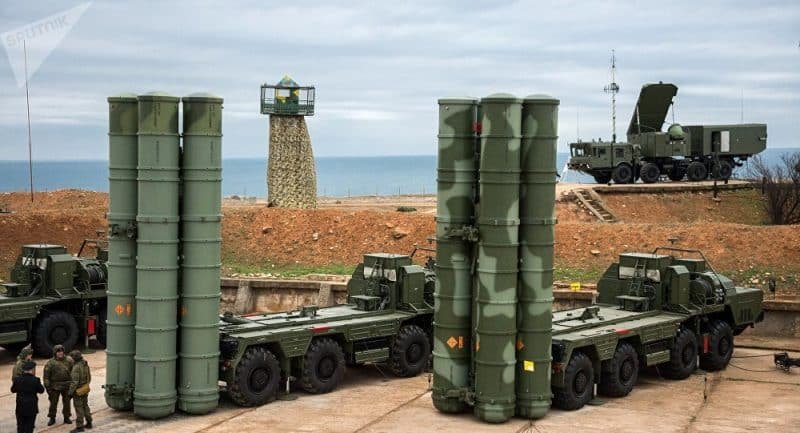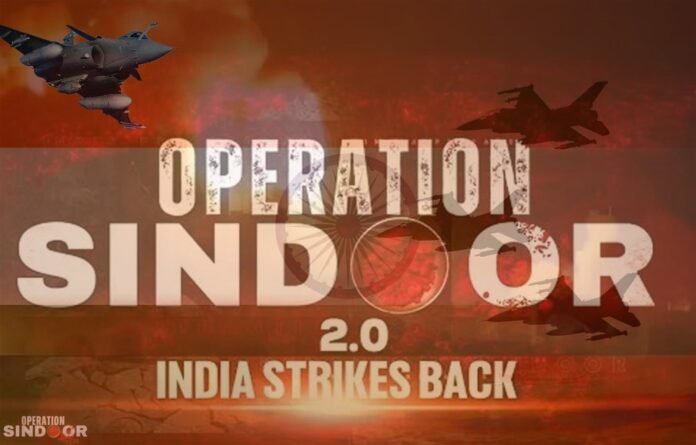In modern aerial warfare, few moments are as defining as the four-day conflict between India and Pakistan — codenamed Operation Sindoor. While the operation showcased India’s multidimensional military capabilities, it will be remembered most for two achievements. The first is the Indian airstrike on the Kirana Hills – an unprecedented attack on a nuclear weapons storage depot. The second, and most recent revelation, is the longest surface-to-air missile kill in aviation history.
At the heart of this spectacular feat was Russia’s formidable S-400 Triumf air defence system, operated by the Indian Air Force. In a staggering display of reach and precision, the S-400 intercepted and destroyed a Pakistan Air Force airborne platform — likely the $160 million Saab Airborne Early Warning and Control (AEW&C) aircraft — at an estimated distance of 300 kilometres. This surpasses all known records in the realm of air defence, effectively redrawing the boundaries of modern warfare.
Spearhead of the Sky
Ever since the dust had settled over Operation Sindoor, the Indian opposition had been Pakistan’s tune, questioning India’s claims of decimating several Pakistani military targets. Some like Congress leader Rahul Gandhi have virtually turned into Pakistan’s unofficial mouthpiece, with his sidekick Gaurav Gogoi even trashing India’s battlefield tactics.
This was the tipping point that forced Air Chief Marshal Amar Preet Singh to hold a press conference and reveal the complete tally. Singh announced that six Pakistani aircraft — including five fighter jets and a large aerial strategic platform — had been neutralised in the air and around five more on the ground. The confirmation by the IAF chief left no ambiguity: it was the S-400 that dealt the most decisive blows.
“The S-400 was a game-changer,” the Air Chief stated. “Its presence kept Pakistani aircraft from even daring to come close, neutralising threats like long-range glide bombs before they became a concern.”
In a staggering display of reach and precision, the S-400 intercepted and destroyed a Pakistan Air Force airborne platform — likely the $160 million Saab Airborne Early Warning and Control (AEW&C) aircraft — at an estimated distance of 300 kilometres. This surpasses all known records in the realm of air defence, effectively redrawing the boundaries of modern warfare
Sure, India’s indigenous systems — like the Akash SAM, BRAHMOS missiles, Rafale fighters, Sukhoi-30MKIs, military satellites, and advanced drone warfare units — played integral roles. But every team has a leader, and in Operation Sindoor, that was undeniably the S-400.
Triumf – A Sound Acquisition
To understand the scale of this achievement, we need to flash back to 2016 when much of the opposition and their liberal allies had questioned India’s decision to acquire five batteries of the S-400 for $5.43 billion. The US administration had also threatened to impose sanctions if India went ahead with the deal.
Back then in an article published in the Russian state media, this writer had asserted that India’s acquisition of the S-400 would have a “devastating impact on the Pakistani military’s psyche.” The reasoning was sound and strategic:
- With a 600 km tracking range and 400 km kill zone, the S-400 could dominate nearly all of Pakistani airspace from launch sites within India.
- An S-400 missile fired from Adampur in Punjab could reach an F-16 flying over Sargodha in just 65 seconds.
- The psychological and tactical effect would be such that even stealth aircraft—long considered untouchable—would no longer be safe.
During Operation Sindoor, these predictions played out almost to the letter.
AEW&C aircraft are vital for surveillance, target acquisition, and command-and-control functions. By eliminating such a high-value asset deep inside enemy territory, the S-400 struck at the very nerve centre of Pakistan’s aerial defence. From that moment on, Pakistan was flying blind.
The Kill That Changed the Equation
The downing of the Pakistani AEW&C at 300 kilometres was a defining moment in the clash. AEW&C aircraft are vital for surveillance, target acquisition, and command-and-control functions. By eliminating such a high-value asset deep inside enemy territory, the S-400 struck at the very nerve centre of Pakistan’s aerial defence. From that moment on, Pakistan was flying blind.
More notably, the S-400 struck several Pakistani fighter jets while they were still inside aircraft shelters. This level of precision — combined with intelligence support from satellites — crippled the Pakistan Air Force’s ability to respond.

Psychological Shock and Strategic Fallout
For the Pakistani military, this wasn’t just a tactical loss — it was a humiliating experience, although one could say by now the Pakistanis must be used to being humiliated on the battlefield. The S-400 didn’t just shoot down aircraft; it erased the airspace buffer that Pakistan relied on for decades. As predicted in 2016:
- PAF jets were forced to operate at a considerable distance west of the Indian border.
- Pakistani commanders were left vulnerable, unable to call in air support.
- Air corridors became narrow death traps.
- The S-400’s very presence changed how war was fought and how deterrence was calculated.
The S-400’s record-breaking 300-kilometre kill has forced military planners worldwide to rethink strategies involving stealth aircraft, stand-off weapons and airborne platforms. Will air defence weapons like the Triumf tip the balance against aircraft?
The Chinese Copy That Couldn’t
In its quest to match India’s capabilities, Pakistan had acquired the HQ-9, a Chinese knockoff of the Russian S-300 system. Though heralded in some military circles as a potential equaliser, the HQ-9 failed to intercept any Indian aerial assets during Operation Sindoor. It became clear that imitation is no substitute for proven technology.
Global Wake-Up Call
The implications of Operation Sindoor ripple far beyond the Indian Subcontinent. The S-400’s record-breaking 300-kilometre kill has forced military planners worldwide to rethink strategies involving stealth aircraft, stand-off weapons and airborne platforms. Will air defence weapons like the Triumf tip the balance against aircraft? What happens to America’s much touted F-35 fighter? With the S-400 and its clones likely to proliferate worldwide, aircraft manufacturers will definitely have to come up with ways to neutralise this new threat.
For India, the operation validates its investment in cutting-edge technology, despite geopolitical pressures and threats of sanctions. For adversaries, it’s a chilling reminder that the age of safe skies is over. Clearly, distance is no defence.
The S-400’s performance has also spotlighted India’s growing prowess in integrating advanced systems into a cohesive war-fighting machine. From indigenous drones to global partnerships, India’s military ecosystem is evolving into a force that commands respect — and fear.
Operation Sindoor wasn’t about annihilation but about asserting dominance while preserving the possibility of peace. It was a calculated strike, executed with precision and concluded with purpose
Conclusion
Operation Sindoor wasn’t just a victory for India; it showcased next-generation warfare. And as Air Chief Marshal Singh’s briefing made clear, this was more than just a weapon doing its job — it was a symbol of India’s rising strategic dominance.
Despite the operation’s resounding success, Singh revealed a deliberate choice to halt Operation Sindoor after its objectives were met. He reflected on calls to press the advantage — “Aur maarna tha,” some urged — but emphasised the importance of restraint. “Once our mission was achieved, we sought every opportunity to de-escalate,” he said.
The goal was clear: to deliver a lesson to adversaries that would deter future aggression. “They now know the price they’ll pay,” Singh added.
This measured approach underscores India’s strategic maturity. Operation Sindoor wasn’t about annihilation but about asserting dominance while preserving the possibility of peace. It was a calculated strike, executed with precision and concluded with purpose.
Welcome to the age of the 300-kilometre kill.
–The writer is a globally cited defence analyst based in New Zealand. The views expressed are of the writer and do not necessarily reflect the views of Raksha Anirveda






